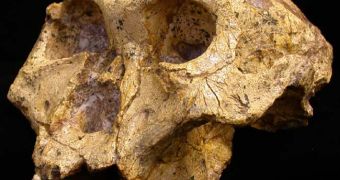The mighty early human hunters could have relied on roots and tubers when meat or fruit were out of their reach, at least during the dry season.
When a team investigated in 1999 the teeth of two ancestral hominids, Australopithecus aferensis and Paranthropus (Australopithecus) robustus, which lived in Eastern/Southern Africa 2 million years ago, there was evidence that about 35 % of their diet was made of grasses and sedges, or animals consuming these food items, a fact proven by the C4 type photosynthesis signature of these plants detected on the chemical structure of the teeth. Researchers believed that the hominids' flat, thickly enameled molars were better at chewing hard, brittle stuffs, not tough materials like grass or meat.
Now a team led by Nathanial Dominy of the University of California, Santa Cruz, seems to have come with an answer to the puzzle: the early humans could have eaten in fact not the leafy parts of grasses and sedges, but their subterranean storage organs (USOs), rich in starch, like corms, tubers, bulbs and rhizomes.
USOs present a more brittle structure, matching the molars of the early hominids and have the same chemical signature like the aerial organs.
Dominy's team came with this hypothesis after finding matchings between the chemical signatures in the bones of current mole rats (African burrowing rodents that rely on USOs) and that of mole rats contemporaneous with both Australopithecus species. Moreover, the mole rat signatures matched that from the early hominid teeth.
"This shows that without doubt there were underground storage organs with the C4 signature at the same time and at the same place that these [hominids] lived," Dominy told LiveScience.
"So they could've eaten them."
"The findings provide scientists with another clue about the diet of early hominids. It doesn't mean our ancestors specialized on USOs. It simply doesn't rule out the possibility of them eating USOs," said Mark Teaford, an anthropologist at John Hopkins University, not involved in the research.
Others are not so enthusiastic.
"The main C4 food that mole rats eat is grass corms, which are tiny and would not provide enough food for large-bodied hominids. In the dry savanna environment surrounding the early hominid sites analyzed, there is little evidence for swampy habitats where really abundant C4 plant foods would have been available," said Stanley Ambrose, an anthropologist at University of Illinois.

 14 DAY TRIAL //
14 DAY TRIAL //